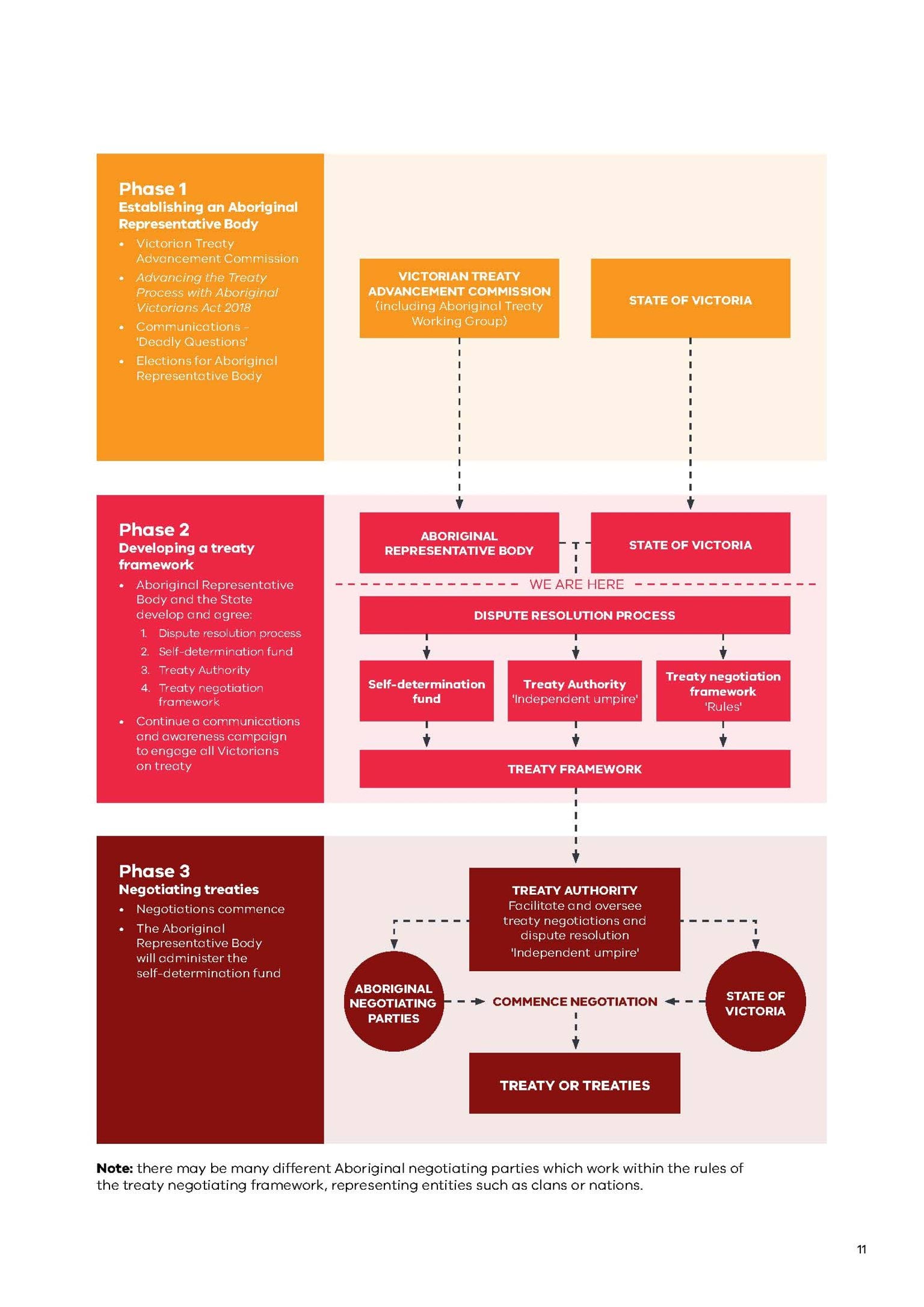Since that time, Victoria has been leading the nation to progress treaty and advance Aboriginal self-determination in partnership with Aboriginal Victorians. Victoria is currently in Phase 2 of a three-phase process towards treaty.
Phase 1: Establishing an Aboriginal Representative Body
Phase 1 began with the Victorian Government’s commitment to treaty.
Since then, we have seen:
- extensive community consultation
- appointment of a dedicated Victorian Treaty Advancement Commissioner
- launch of Deadly Questions, an award-winning campaign to build public awareness and support for treaty
- passage of the Treaty Act, Australia’s first treaty legislation
- establishment of the Assembly, the first statewide, democratically elected representative body for Aboriginal Victorians in the state’s history.
On 9 December 2019, on the recommendation of the Victorian Treaty Advancement Commissioner, the former Minister for Aboriginal Affairs, Gavin Jennings declared the Assembly to be the Aboriginal Representative Body.
This declaration, via a notice in the Victorian Government Gazette, satisfied the Minister’s obligations under the Treaty Act to recognise the Assembly as the State’s partner in the next phase of treaty. This signified the completion of Phase 1 of the treaty process.
The Advancing the Treaty Process Annual Report and Plan 2018-19 describes the work undertaken in Phase 1 in further detail.
Phase 2: Developing a treaty framework
Phase 2 commenced in December 2019, following the Assembly’s declaration as the Aboriginal Representative Body. As the Aboriginal Representative Body under the Treaty Act, the Assembly is the sole representative of Aboriginal Victorians responsible for working with the State to establish elements necessary to support future treaty negotiations. The Assembly and the State are working in partnership in Phase 2 to establish by agreement a Treaty Authority, treaty negotiation framework and self-determination fund.
The Assembly and the State must also agree to a dispute resolution process to apply to disputes arising in Phase 2. Together, these four elements are referred to throughout this document as the treaty elements.
Phase 2 will not involve the negotiation of a treaty or treaties, as this is not the function of the Aboriginal Representative Body. Instead, through the treaty negotiation framework, the Assembly and the State will likely determine the Aboriginal parties that will have standing to negotiate a treaty or treaties with the State in Phase 3.
Phase 3: Negotiating treaties
Phase 3 will commence once the State and the Assembly have established the treaty elements by agreement. Phase 3 will comprise of treaty negotiations with Aboriginal negotiating parties, to be determined through the treaty negotiation framework.
As set out in the Treaty Act, the treaty negotiation framework must provide for the negotiation of a treaty or treaties that recognise historic wrongs, support reconciliation and have positive impacts for Victoria, among other matters. What this might look like, and any other content of a future treaty or treaties, will be subject to negotiation between the parties to any treaty or treaties.
During Phase 3, the self-determination fund will play a critical role in supporting Aboriginal negotiating parties to have an equal standing with the State in treaty negotiations.
The Victorian treaty process - three phases overview
Updated


